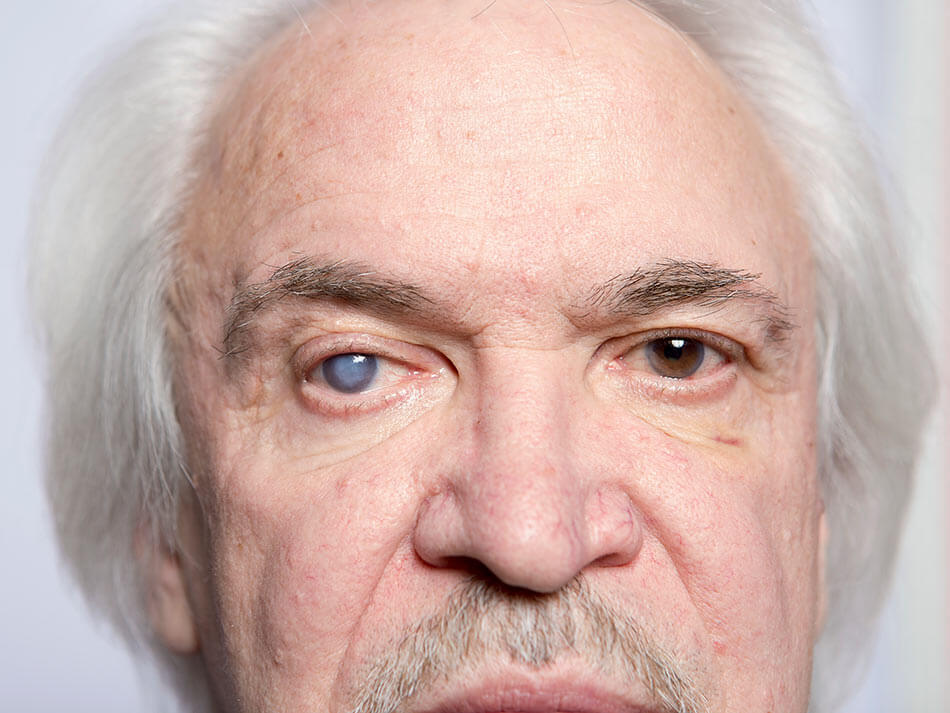6 Alarming Ways Smoking Affects Vision and Eye Health
Smoking causes all kinds of cancer, respiratory disease, and cardiovascular disease. In fact, 480,000 Americans die each year of smoking-related illnesses and 1/3 of cancer deaths are linked to smoking.
While we’re all aware of the health risks associated with smoking, did you know that this bad habit harms almost every organ in your body, including your eyes?
Scientists have proven that smoking affects vision. Every cigarette increases your risk of developing macular degeneration, glaucoma, cataracts, and diabetic retinopathy. If you’re wearing contact lenses and smoking, you’re at a greater risk, even if you use daily disposable lenses.
Here are six alarming ways smoking affects vision and what you can do to minimize the risk.
1. Age-Related Macular Degeneration
Age-related macular degeneration (AMD) is the leading cause of blindness in the developed world. AMD is a neurodegenerative disease that affects the retina and creates blind spots in the center of your sight. Central vision loss makes daily tasks, such as driving, impossible.
Now, we also know that those who smoke are three times as likely to develop AMD in later life. Studies have shown that smoking is the most modifiable risk factor in AMD progression. This is good news. Since smoking is the biggest modifiable factor, quitting at any age can de-escalate your risk of developing AMD.

2. Cataracts
Cataracts is an age-related condition. As we age, the clear lens of our eye becomes cloudy. This causes blurred vision, sensitivity to glare, and a general colorlessness. Cigarettes cause cataracts by disrupting the cells of the lens and causing oxidation.
This oxidation, combined with deposits of heavy metals such as cadmium, damages vision. In fact, smokers are twice as likely to develop cataracts than non-smokers. Not only that, but the effect of smoking on cataracts is cumulative. The more you smoke, the more likely you are to develop cataracts. Likewise, those who smoke heavily are three times more at risk.
3. Glaucoma
Glaucoma refers to a group of diseases that causes damage to the eye’s optic nerve, a mass of nerve fibers that connect the retina to the brain. One of the main causes of damage to this optic nerve is an increase in eye pressure. The fluid inside your eye must maintain a precise internal pressure in order for the eye to operate. Pressure in the eye can reach dangerous levels when a buildup of fluid gets caught in the anterior chamber of the eye. When this happens, blood vessels are constricted and oxygen starved tissue in the eye dies. It’s important to note that there is no strong evidence that smoking causes glaucoma. However, smoking does cause abnormalities that increase eye pressure, particularly in older smokers.
4. Diabetic Retinopathy
People who have diabetes are at risk of developing Diabetic Retinopathy. Diabetics experience spikes in their blood sugar levels that can damage delicate blood vessels in the retina. If the blood vessels in your retina swell, become blocked, leak, de-oxygenize or develop abnormalities, you can lose your sight. There is no solid link between smoking and diabetic retinopathy, but smoking does cause diabetes. In general, smoking can increase the risk of developing diabetic retinopathy.
5. Contact Lenses and Smoking

Dry eyes is a common reaction to contact lenses. Add smoke into the mix and you’re exacerbating an already serious problem. Contact lens retailers advise regular eye exams but ophthalmologists can struggle to detect smoke-related damage.
Our eyes draw their oxygen from the environment. Contact lenses act as a barrier that hinders passage of oxygen to the cornea, making the eyes dry and sore. Anything that causes the body to lose water impacts the eyes, and cigarette smoke is a major dehydrant.
Even more worrisome, when chemicals found in cigarettes enter your bloodstream, these can restrict blood flow to the retina. This puts your eyes at serious risk of damage.
Finally, smoke particles such as tar and nicotine cling to smokers’ fingers and are transferred to the surface of contact lenses. These toxic particles can get caught between the lens and the eye, causing ulcers and lesions that can permanently scar your eyes.
6. Contact Lenses and Second-hand Smoke
Studies have shown that second-hand smoke has an adverse effect on soft contact lens wearers. Both the smoke from burning cigarettes and the smoke exhaled by smokers are dangerous. In fact, tear instability and ocular surface damage have been linked to second-hand smoke. While good hygiene is key, even the best contact lens solution cannot eradicate the dangerous chemicals in second-hand smoke.
What Can You Do?
It’s motivating to know that smoking is the most preventable cause of vision loss. If you quit today, you will immediately reduce your risk of developing smoking-related vision loss. Even if you’ve been smoking for decades, quitting can reverse the harm smoking has done to your body. One year spent smoke-free reduces your risk of macular degeneration by 6%. You’ll also have less chance of developing cataracts and diabetes, and you’ll reduce your risk of cancer.
If you’ve already experienced eye disease and vision loss related to smoking, quitting now may deter the disease. As age-related Macular Degeneration worsens over time, quitting now may save your sight.
Experts also suggest making positive lifestyle changes to give your body the best possible chance to repair itself. Begin regular exercise, improve your diet to lower your blood pressure and cholesterol, and always protect your eyes from the sun.
Quitting isn’t easy, but there are many resources to help. Be sure to utilize local support groups and addiction counselling. Embrace the help that your friends and family offer; this can lighten the load. And finally, if you ever need extra motivation, re-read this article on how smoking affects vision. It’s here to remind you that quitting could save your eyesight.